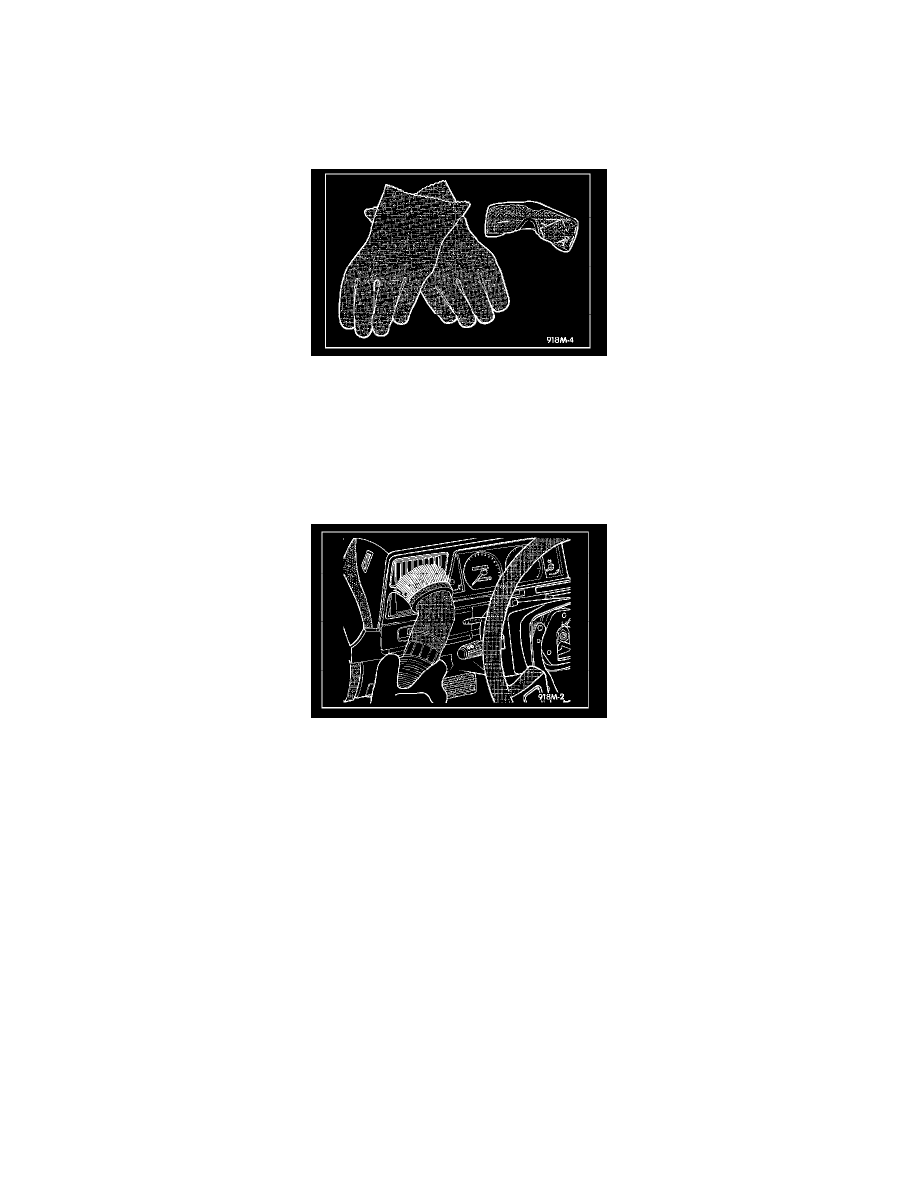Raider 4WD V6-3.7L SOHC (2007)

Using the active DTC information, refer to the Airbag Squib Status table to determine the status of both driver and/or passenger airbag squibs.
NOTE: If none of the Driver or Passenger Squib 1 or 2 open are active codes, the status of the airbag squibs is unknown. In this case the airbag should
be handled and disposed of as if the squibs were both live.
CLEANUP PROCEDURE
Following a supplemental restraint deployment, the vehicle interior will contain a powdery residue. This residue consists primarily of harmless
particulate by-products of the small pyrotechnic charge that initiates the propellant used to deploy a supplemental restraint. However, this residue may
also contain traces of sodium hydroxide powder, a chemical by-product of the propellant material that is used to generate the inert gas that inflates the
airbag. Since sodium hydroxide powder can irritate the skin, eyes, nose, or throat, be certain to wear safety glasses, rubber gloves, and a long-sleeved
shirt during cleanup.
WARNING: To avoid personal injury or death, if you experience skin irritation during cleanup, run cool water over the affected area. Also, if
you experience irritation of the nose or throat, exit the vehicle for fresh air until the irritation ceases. If irritation continues, see a physician.
1. Begin the cleanup by using a vacuum cleaner to remove any residual powder from the vehicle interior. Clean from outside the vehicle and work
your way inside, so that you avoid kneeling or sitting on a non-cleaned area.
2. Be certain to vacuum the heater and air conditioning outlets as well. Run the heater and air conditioner blower on the lowest speed setting and
vacuum any powder expelled from the outlets.
CAUTION: Deployed front airbags having two initiators (squibs) in the airbag inflator may or may not have live pyrotechnic material
within the inflator. Do not dispose of these airbags unless you are sure of complete deployment. Refer to Airbag Squib Status. All
damaged, faulty, or non-deployed supplemental restraints which are replaced on vehicles are to be handled and disposed of properly. If
an airbag or seat belt tensioner unit is faulty or damaged and non-deployed, refer to the Hazardous Substance Control System for proper
disposal. Be certain to dispose of all non-deployed and deployed supplemental restraints in a manner consistent with state, provincial,
local and federal regulations.
3. Next, remove the deployed supplemental restraints from the vehicle. Refer to the appropriate service removal procedures.
4. You may need to vacuum the interior of the vehicle a second time to recover all of the powder.
